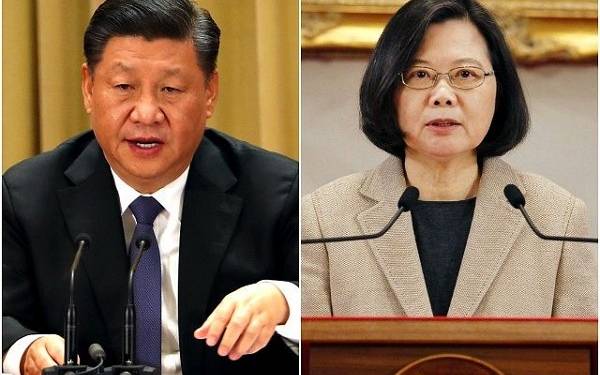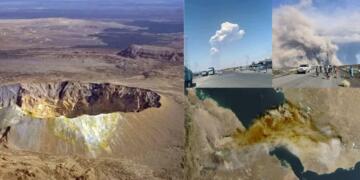The Chinese Communist Party (CCP) wants to dominate the globe and use its armed wing, the People Liberation’s Army (PLA) as a tool of coercion in foreign policy. But for all its global ambitions, a tiny island not very far away from China’s baseline is haunting Beijing and its defence forces. We are talking about Taiwan, which is separated from China only by a narrow stretch of water called the Taiwan Strait (or Formosa Strait).
For its tiny size, Taiwan packs a punch with its long-range missiles and air defence system, virtually incapacitating China. As per latest reports, the PLA Air Force (PLAAF) was in for another embarrassment on Wednesday, when Taiwanese warplanes chased away multiple Chinese Su-30 and J-10 fighter jets that had intruded into Taiwan’s Air Defense Identification Zone (ADIZ), prompting the Taiwanese Air Force to issue as many as 24 warnings.
Taiwan’s Defence Ministry has issued a stern statement following the latest incident, reading, “What the Chinese communists did not only unilaterally, but also seriously, violated peace and stability in the region. For this, we gravely condemn their acts.”
The reason behind the latest Chinese incursion reveals how the Chinese strategic circles have been left befuddled by Taiwan’s growing military firepower backed by the United States. Taiwan had got engaged in a live-fire exercise involving its arsenal of large-range missiles on Wednesday and an unspecified number of missile tests were carried out in the wee hours between 5 AM and 7 AM by Taiwanese State-funded National Chung-shan Institute of Science and Technology (NCSIST).
The type of missiles that were test-fired is not clear, and according to SCMP, their altitude was described as “limitless” in the notice. But local military experts have reportedly figured out that they could be long-range Surface-to-air missiles, long-range supersonic cruise missiles and anti-ship cruise missiles. China was, of course, perplexed because these missile systems thwart its non-contact warfare and naval domination ambitions across the 166 Islands that Taiwan controls in the South China Sea.
Taiwanese media reports also speculated that Chinese warplanes intruded into the island-State’s ADIZ because they wanted to gather intelligence about the latest weapons tests. This implies that China is rattled about Taiwan’s aggressive military expansion plans.
China has a reason to be all the more worried because Taiwan is planning to conduct more such weapons tests off its Southern, Eastern and North-eastern Coasts. In fact, NCSIST says that relevant authorities, including the Transport Ministry and Fisheries Agency, had approved these tests till September 17.
Taiwan is therefore pushing China back by constantly upgrading its weaponry and testing its strength through live-fire exercises. Taiwan embarked on a major military strengthening plan ever since China turned into a belligerent bully earlier this year. And Taiwan is now preparing for new-age contactless warfare to repel any Chinese aggression with American help.
Taiwan is buying a range of American weapons, including a 620 million US dollars upgrade package for Patriot surface-to-air missiles, and MK-48 Mod6 Advanced Technology Heavy Weight Torpedoes and related equipment worth 180 million US dollars. Taiwan is also looking to upgrade its indigenous navy drones and is also in talks to purchase the Sea Guardian surveillance drones having a range of 6,000 nautical miles from the United States of America.
The defence upgrade plans are already showing effect. As recently as August 10, for example, Taiwan had activated its land-based air defence missiles following an incursion by Chinese warplanes into the Taiwanese airspace. Ultimately, the Chinese warships were “driven out” by the Taiwanese Air Force, but Taipei signalled that if push comes to shove, it won’t back off from missile warfare.
Taiwan is winning the psychological war against Beijing. For China, its PLA wings, particularly the Navy and the Air Force are a part of its strategic coercion. By carrying out long sorties and intruding into Taiwanese airspace, Beijing wants to impose its hawkish foreign policy on Taiwan.
The Chinese strategy is to use its warplanes for showing muscle and causing face-offs with Taiwan. But the PLAAF fighter jets aren’t meant for war fighting. China, therefore, backs up its air strength by non-contact warfare assets such as unmanned platforms, including AI-backed combat drones, and Surface-to-Surface missiles.
However, Taiwan isn’t letting China have its way. Taiwan is itself investing heavily in surveillance drones, cruise missiles, air defence system and Air-to-Surface missiles, with the single-point agenda of repelling Chinese aggression. Taipei is developing tremendous non-contact warfare capabilities. The message from Taiwan to China is loud and clear– Be prepared to go back with a bloody nose if you try to invade Taiwanese territory. Therefore, even as China tries to bully Taiwan, the tiny Island’s growing military might is putting Beijing in its place.


































